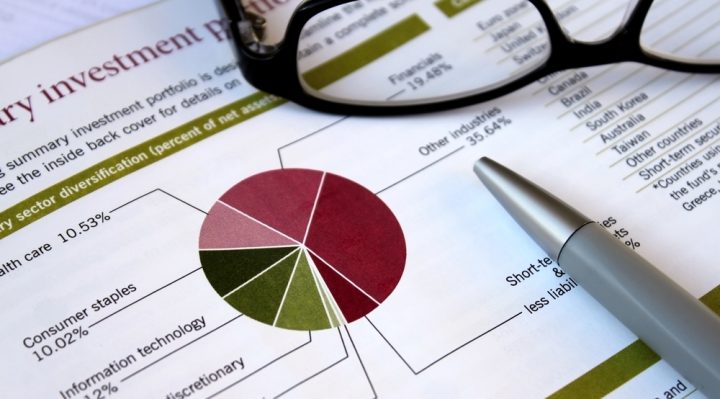If you want long-term success trading stocks, there are no shortcuts. Those who are consistently ‘on the money have done so through hard work, learning the markets, and understanding all 11 stock market sectors.
Sure, you can be a day trader and make little bits of profit here and there. But often, these people work in a niche. They know a very tightly focused segment of the market. So they guerilla hit-and-run tactics to eke out a living.

But in a volatile market, the keyword is diversification. It would be best to spread the risk by not putting all your eggs in a tiny basket. Instead, it is better and safer to play all the different stock market sectors. As one goes down, another invariably goes up. You are playing the percentages in a fast-moving and dynamic investing landscape.
So how much more confident would you feel if you knew how to access all the different markets?
Not only that, though. But also have a solid grasp of the 11 stock market sectors? And be able to plan an investment strategy that ensures maximum returns?
If this sounds familiar, please read on. Our 2020 guide to the 11 stock market sectors will get you up to speed. It arms you with everything you need to know and shows you how to access different markets.
Stock market sectors: what are they?
Before going in too deep, let’s set the scene first. As you are doubtless aware, many thousands of companies are traded on the stock market. To organize trading efficiently, the stocks are arranged into sectors. These sectors are broad classifications and group companies that work in a related field. Understanding these sectors is crucial for stock trading. Being familiar with all the sectors will give your investment strategy and trading a valuable edge.
Why are market sectors important?
Sectors are weather vanes to market sentiment. Generally speaking, stocks in a sector will move together in the same direction. So, if several energy stocks begin to drop, there’s a good chance the others will follow suit. This volatility, therefore, underlines the need for you to diversify your portfolio and reduce your exposure. And have a comprehensive understanding of each of the individual sectors.
Who decided on the 11 market sectors?
The arrangement of stocks that we see today got underway in late 2017. First, the Global Industry Classification Standard (GICS) launch by the S&P 500 saw the markets categorized into 11 sectors.
What are the 11 market sectors?
Stocks were grouped into stock sectors representative of the overall economy. They are as follows:
- Energy
- Basic Materials
- Industrials
- Consumer Discretionary
- Consumer Staples
- Healthcare
- Financial
- Information Technology
- Communications
- Utilities
- Real Estate
Sector overview
Energy – This sector contains fossil fuel companies and provides equipment and services to the oil, gas, and coal sectors. All the big-name oil companies are in this sector, e.g., BP, Halliburton, Chevron, Schlumberger, etc. This sector is naturally linked very closely to the price of crude oil. Therefore, if the price of crude takes a tumble, you can be sure stocks in this sector will fall as a consequence.
Basic materials – This sector consists of companies that keep the economy working. It includes companies supplying chemicals, construction materials, metals, packaging, paper, etc. Generally, this sector is business to business rather than selling directly to the consumer. Nevertheless, they are critical players in the supply chain and include such companies as DowDuPont, Sherwin-Williams, etc. This sector is an essential economic barometer to keep your weather eye.
Industrials – Residing within this sector are manufacturing companies and others, including defense, airlines, aerospace, and construction. Many large caps are Boeing, Caterpillar, Deere, Lockheed Martin, 3M, Delta, etc. As a result, the performance of this sector can often gauge the health of an economy.
Consumer Discretionary – This sector represents companies with whom the consumer will spend their discretionary income. As you will expect, consumer discretionary embraces a broad spectrum of retailers, restaurants, hotels, household products, and the media. All the household names like Amazon, Ford, Starbucks, Target, Home Depot, etc., are in this sector. When consumers are confident, they spend their cash. This expenditure will be reflected in the fortunes of the stocks in consumer discretionary.
Consumer Staples – The other significant consumer segment is Staples. This sector encompasses food, beverages, household goods, supermarkets, the items we spend money on regularly. This sector comprises, for example, Walmart, Procter and Gamble, Coca-Cola, Kraft Heinz, and so on. The stocks here relate to goods that we regularly spend money on, rather than discretionary spending like eating in restaurants, buying new clothes, or new cars. Companies in this sector are usually considered resilient to temporary economic turndowns.
Healthcare – Under this banner, you will find healthcare companies that supply pharmaceuticals, health-related equipment, and healthcare providers. Think Johnson and Johnson, Merck, Pfizer, UnitedHealth, etc. Companies in this sector are usually reasonably safe bets, as people will always need hospitals, drugs, and medical care.
Financial – Closely linked to interest rates, the financial sector comprises banks, insurance companies, etc. Major players in the field include JPMorgan, Well Fargo, Bank of America, Goldman Sachs. If interest rates creep upward, the big banks rake in more as they can charge more for loans and mortgages.
Information Technology – More commonly known as the tech sector, the Information Technology sector is the natural home of internet, software, and hardware companies. It also embraces electronics and communications equipment manufacturers, data processing, and companies providing IT services. All the tech world’s big hitters are included in this sector – Microsoft, Visa, Intel, Salesforce, Visa, etc. The IT sector has been a strong bull market for years and is expected to be so for some time.
Communications – As its name suggests, this sector is the habitat of comms companies. Google, Facebook, Verizon, AT&T, Netflix, Sprint, Comcast, and many more. Most in this sector rely on recurring revenue streams, but others earn their profits from advertising, such as social media companies and search engines.
Utilities – You will find electric, water, and gas utility companies here. These utilities are regional since there are no nationwide water or electric companies in the USA. You may not recognize many names, but they include utility companies like Duke Energy, PG&E, NRG, and Xcel. This sector is considered one of the more defensive sectors as consumers will always need what they are selling. Despite being subject to strict governmental regulation, utilities are safe in a volatile market.
Real Estate – Not much explanation is required here. This sector is home to real estate investment trusts and real estate developers. Companies earn their money via rental incomes and rising property prices. They operate a host of real estate, from malls and apartments to commercial property and nursing homes. Since these companies pay out a minimum of 90% of taxable profit as shareholder dividends, they are an excellent long-term hold. They usually payout quarterly.
You can get further information on the 11 market sectors on Yahoo! Finance and stay up to date with Fidelity’s latest market sector news.
Getting access to the markets
Now that you know what markets sectors are, how do you access the markets?
The first step in trading the various market sectors is to get a brokerage account. A brokerage account lets you trade individual sectors – rather than individual stocks – by investing in exchange-traded funds. There are plenty of brokerage houses to choose from, so shop around for the best deal on commission. One such brokerage you may wish to look at is Vanguard.
To explain a little more, ETFs are essentially groups of stocks placed into a single fund. ETFs tend to be stable and less volatile than other stocks. They are a good entry point if you are new to investing and averse to rapid and dramatic price fluctuations.
You rely on your brokerage account to trade and invest in ETFs. While you would usually invest and trade sector-wise, it’s also possible to do the same with individual stocks within the sector. For example, you buy stock in Johnson and Johnson, which is part of the healthcare sector.
Are you limited to US sectors?
No. You can invest overseas too. The European, Canadian, and Asian stock markets have adopted the same market sectors as the US. This alignment enables you to compare and see how sectors in other countries are performing. In addition, there is a multitude of resources on the web that help you track what is going on abroad.
Staying ahead of the curve
Again, this is valuable knowledge to have. A sector overview will give you a broader picture of what is happening in the global market and how that might impact the USA. This intel is all-important input for investment strategy and investing in a suitably diversified portfolio. This info is particularly relevant if you are seeking long-term holds. A helicopter view of a market sector at home and abroad is investment gold over the previous 12 months.
That said, the mantra that the past is no indicator of the future applies. However, you will get a steer and an inkling of future trends overall. Information, not hope, is king in the stock market.
If your focus is a little more short-term, monthly and daily performance reports are valuable in this instance. An in-depth analysis of technical and fundamental charts will help put you on the right track if you are a day trader. By finding which sectors are performing well today, you can drill down to see the strongest stocks within that sector.
Bear in mind that an intense day in one sector may well be short-lived. Markets and bad economic news can rush in either direction. Therefore, the importance of timing your entries and exits well and cutting your losses quickly cannot be overstressed. Sentiment and emotional attachment are not going to do your wallet any favors.
What is the top tip for being a successful trader?
Failing to prepare, as the well-worn expression goes. As a result, it’s estimated that around 90% of all traders entering the markets get burnt. And all because they failed to draw up a battle plan.
Often novice investors will buy stock on a friend’s recommendation and cross their fingers that the price heads north. Unfortunately, hoping for the best is not a game plan. It is doomed to failure. Your dreams will be lost along with your cash.
As mentioned earlier, knowledge is power when investing and accessing the markets. Do your homework and commit to staying abreast of developments. In reality, there’s no endpoint where you can say, “Okay, I’ve finished my homework!” You will find you are learning new stuff every day. The more you know, the more successful you will become.
This all sounds like hard work
Some people prefer to be hands-on when investing and trading stocks in market sectors. They revel in the DIY approach and the thrill of the chase. However, for others, the very thought makes them queasy.
If you want to take a more laid-back and passive approach to your investment, there are robot advisors to take charge. These platforms use algorithms to help you create the optimum portfolio to meet your needs and your acceptable risk level. Mostly they do so by investing in ETFs. With most platforms, the bot chooses the funds and market sectors for you. After setting up the account, put your feet up, and let the platform do the sweating. Occasionally, log in to check your account balance.
Conclusion
It is entirely feasible as a private individual to trade and invest in the 11 market sectors. However, if you want a less hands-on approach, there are several ways to access them, either via a brokerage account or a Robo advisor platform. Moreover, in these uncertain times, trading in market sectors offers less risk exposure than many other types of stocks.



